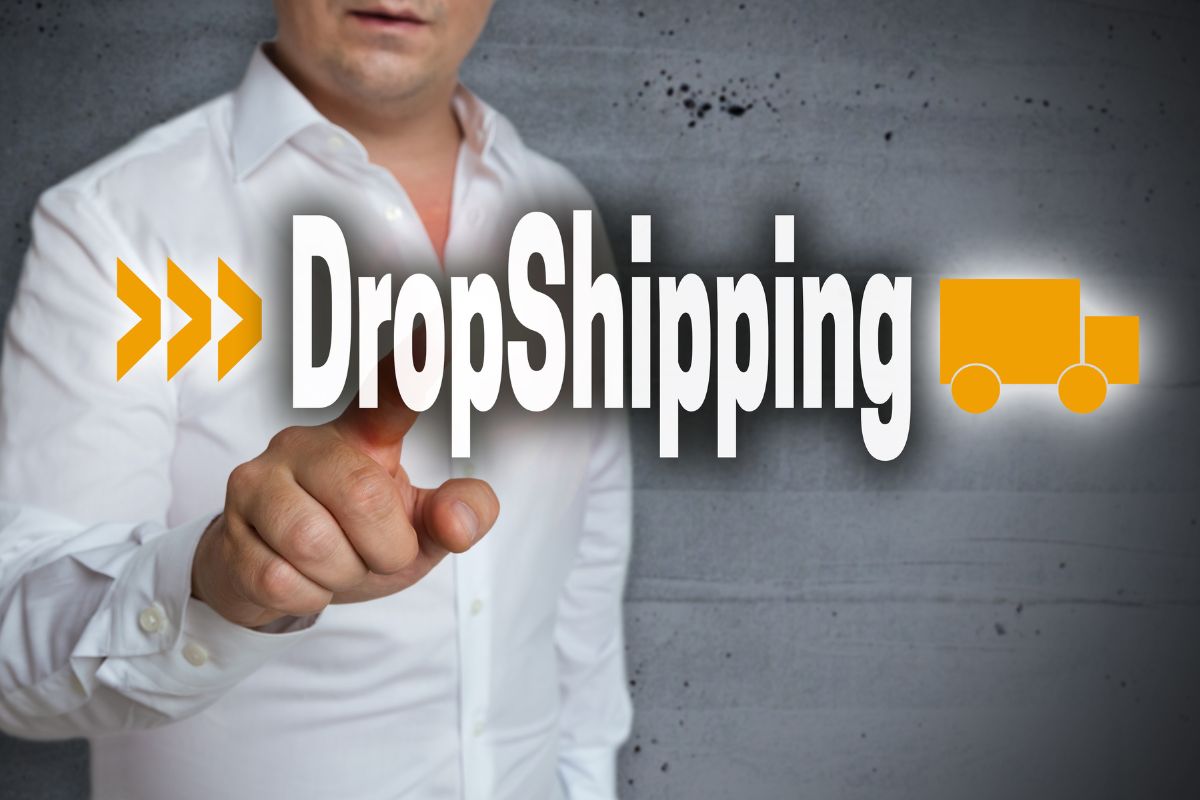Dropshipping has emerged as a popular business model that allows you to sell products to your customers without ever holding inventory. When a customer makes a purchase, the order is sent to your supplier, who then ships the product directly to the customer. This method minimizes the risk and investment while offering convenience and practicality, making it an appealing option for aspiring entrepreneurs like you.
In the dynamic environment of e-commerce, dropshipping can be the entry point for you to test the waters with innovative business ideas. Whether you’re looking into niche products or exploring broader markets, dropshipping provides a canvas for your entrepreneurial spirit. The flexibility of the model enables you to respond quickly to market trends, consumer preferences, and the ever-changing online landscape.
To succeed in dropshipping, it’s crucial to identify products that reflect consumer demands while balancing profitability. Leveraging tools and analytics can help pinpoint what items have the potential to generate significant interest and sales. Tapping into resources like “The Ultimate Guide to Dropshipping” can provide in-depth insights and actionable strategies, enabling you to curate a compelling product offering for your dropshipping business.
Understanding Dropshipping
Before diving into the specifics, it’s vital for you to grasp that dropshipping is a streamlined business model that allows you to sell products without holding any inventory, and it comes with particular roles for the retailer, as well as distinct benefits and risks.
Defining Dropshipping Business Model
Dropshipping is a retail fulfillment method where you, the retailer, don’t keep the products you sell in stock. Instead, when you sell an item, you purchase it from a third party — usually a wholesaler or manufacturer — and it is shipped directly to the customer. This means you’re essentially selling products through a business model that requires minimal upfront investment but relies heavily on your suppliers’ reliability.
The Role of the Retailer in Dropshipping
As a retailer in a dropshipping business, your primary responsibilities include setting up an online store, marketing products to customers, and managing customer service. You’ll have to ensure seamless retailer-customer interactions while the physical handling of the product is managed by your supplier. Your success hinges on the trust you build with customers and the partnerships you establish with suppliers.
Benefits and Risks of a Dropshipping Business
Benefits of a dropshipping business include lower financial barriers to entry, reduced overhead since you’re not managing physical inventory or warehouses, and the ability to offer a wide array of products. However, there are risks involved as well. These risks can include dependency on third-party suppliers, thinner profit margins, and potential shipment and supply issues that can affect customer satisfaction. Your dropshipping venture’s profitability hinges on your ability to navigate these risks while capitalizing on the benefits.
Setting Up Your Dropshipping Business

Starting a dropshipping business involves careful planning and execution. Initially, you need to select a niche, find suppliers you can rely on, and then build a user-friendly online store.
Selecting a Profitable Niche
To ensure the success of your dropshipping business, choosing a profitable niche is crucial. It’s the foundation that defines your product catalog and target audience. Research current trends, customer pain points, and profitability potential before settling on an area to focus on. Tools like Google Trends can provide valuable insights into what products are gaining popularity and can influence your decision.
Identifying Reliable Dropshipping Suppliers
Your dropshipping business’s backbone will be its reliable suppliers. Partnerships with trustworthy suppliers ensure product quality and consistent shipping times, which in turn affects your brand’s reputation. Research suppliers extensively, read reviews, and even consider placing test orders to ensure their reliability and quality. Platforms like Alibaba and insights such as those found in e-commerce perspectives can be valuable resources when scouting for suppliers.
Building Your Online Store with E-Commerce Platforms
An online store is your dropshipping business’s digital storefront. It needs to be intuitive, easily navigable, and visually appealing to customers. Utilizing established e-commerce platforms like Shopify can significantly simplify the process. These platforms offer a range of customizable templates, essential plugins, and helpful tools to manage your store effectively. Don’t forget to choose a memorable domain name, as it’s an integral part of your online identity. Guidance on setting up your store is further explained in resources like The ultimate guide to dropshipping, which can offer step-by-step processes and tips.
Finding and Sourcing Products

Identifying the right products and suppliers is crucial for launching and maintaining a profitable dropshipping business. Your success hinges on thorough market research, understanding product quality and profit margins, and navigating online marketplaces efficiently.
Conducting Market Research
To begin your dropshipping journey, conducting market research is imperative. You should start by identifying current trends and customer demands in the e-commerce space. Examine what products are performing well and determine niches with high growth potential. Using tools like Google Trends can reveal what items are gaining popularity, allowing you to tap into markets before they become saturated.
Evaluating Product Quality and Profit Margins
Product quality directly impacts customer satisfaction and your brand’s reputation, while profit margins determine the financial viability of your dropshipping enterprise. To evaluate product quality, order samples to personally assess the items before listing them on your store. As for profit margins, you’ll want to pinpoint products that offer a healthy balance between cost price and potential retail price. Utilize spreadsheet calculations to anticipate costs and profits, factoring in expenses such as shipping and platform fees.
- Product Cost: $5.00
- Shipping Cost: $2.00
- Platform Fees: $1.00
- Retail Price: $15.00
- Profit Margin: $7.00
Importing Products from Marketplaces like AliExpress and Alibaba
Online marketplaces like AliExpress and Alibaba can be goldmines for dropshippers looking to import products. These platforms offer a vast array of items at competitive prices, making it easier to find products that align with your market research findings. When selecting products from these platforms, consider factors like shipping time, supplier reliability, and minimum order quantities. Establishing a good relationship with trustworthy suppliers is key to ensuring a steady flow of quality products.
Branding and Marketing Strategies

In the competitive landscape of dropshipping, distinguishing your brand and adopting potent marketing strategies are pivotal for success. This section will guide you through developing a robust brand identity, maximizing social media for marketing efforts, and employing targeted ad campaigns on Facebook and Google.
Creating Your Own Brand Identity
To create a potent brand identity for your dropshipping business, you must first understand your unique selling proposition (USP). Develop a logo and tagline that encapsulate your brand’s essence and consistently apply them across all platforms. A brand identity that resonates with your target audience lays the foundation for all future marketing endeavors.
Leveraging Social Media for Marketing
Social media platforms are invaluable for engaging directly with your audience and amplifying brand visibility. Platforms like Instagram and Twitter allow you to showcase products, share customer testimonials, and build community around your brand. Interacting with followers and analyzing engagement data can provide insights into refining your marketing strategies.
Utilizing Facebook and Google Ads
Running ads on Facebook and utilizing Google’s vast network can drive significant traffic to your store. Start by identifying your audience’s demographics and interests through Facebook’s targeting features. Leverage Google Trends to tap into popular search queries related to your products. By crafting compelling ad copy and visuals, you can create effective campaigns that resonate with potential customers, leading to conversions and sales growth.
Operations and Customer Management

In a dropshipping business, your operations and customer management must be streamlined and responsive. This includes managing inventory and fulfillment efficiently, providing exceptional customer service, and having a clear return policy.
Handling Inventory and Order Fulfillment
In the dropshipping model, you don’t keep products in stock. Instead, when a customer places an order, you purchase the item from a third party and have it shipped directly to the customer. It’s essential to establish a system that ensures inventory reliability. You should regularly communicate with suppliers to stay informed on inventory levels. This way, you avoid selling products that are out of stock, which can vastly decrease customer satisfaction and harm your business reputation.
Maintaining High Standards of Customer Service
Customer service can make or break your dropshipping business. You should aim to resolve issues promptly and maintain clear communication. Ensure that your customers can reach you easily through multiple channels such as email, live chat, or by phone. A transparent and proactive approach will help to establish trust and foster customer loyalty. Remember, a satisfied customer is more likely to become a repeat buyer and even refer others to your store.
Crafting a Solid Return Policy
Your return policy should be clear, concise, and easily accessible to your customers. A flexible return policy can increase customers’ confidence in purchasing from your store, but it must also be economically feasible for your business. Make sure to outline the terms of the policy, the return process, and who bears the return shipping costs (you or the customer). A fair return policy not only enhances customer trust but also encourages customers to make a purchase decision.
Niche Dropshipping Business Ideas

When considering a dropshipping business, selecting a niche can be a significant factor in your success. Niche markets often have less competition and a more targeted audience, which can lead to higher conversion rates.
Fashion and Apparel
Fashion and apparel represent a vast and varied field, offering opportunities for you to specialize in unique styles, sizes, or demographics. You might focus on sustainable fashion, tapping into the growing demand for eco-conscious clothing, or plus-size apparel, catering to a market that often faces limited options.
Health and Personal Care
The health and personal care market is burgeoning. A dropshipping business in this niche could offer organic skincare products, fitness supplements, or specialized healthcare devices. It’s essential to maintain credibility by partnering with reputable suppliers who provide quality products.
Electronics and Accessories
In the realm of electronics and accessories, you could refine your focus to cater to tech enthusiasts or offer products that solve specific problems, like ergonomic office gadgets. Remember, electronics can have higher return rates, so manage your customer service processes accordingly.
Eco-Friendly Products and Sustainable Goods
Eco-friendly products and sustainable goods are more than a trend; they represent a shift in consumer values. You might sell biodegradable household items or renewable energy gadgets. This niche aligns with a growing global consciousness about environmental impact.
Hobbies and Lifestyle Products
Lastly, hobbies and lifestyle products can be an excellent arena for dropshipping. Whether your customers are into gardening, gaming, or DIY projects, providing specialized products can help you carve out a dedicated customer base always looking for the next tool or gadget to enhance their hobby.
By tapping into these niches and positioning your dropshipping store to cater to specific interests and needs, you can build a loyal customer base and distinguish your business in the marketplace.
Scaling Your Dropshipping Business

To successfully scale your dropshipping business, it’s crucial to focus on three key areas: staying ahead of competition and market trends, broadening your product range, and expanding your customer base.
Analyzing Competition and Market Trends
To remain profitable and competitive, you need to regularly analyze market trends and your competition. This involves assessing what products are in demand, identifying any shifts in consumer preferences, and understanding the strategic moves of competitors in your niche. Utilize tools such as Google Trends or industry reports to stay informed and adapt your strategies accordingly.
Diversifying Product Offerings
Diversifying your product line is essential to mitigate risks and capture new market segments. Consider extending your offerings to include complementary products or explore new categories that align with your brand. However, it’s crucial to conduct thorough research to ensure that these products have a promising demand and are not saturated in the market.
- Research related niches with high demand and low market saturation.
- Evaluate the potential profitability of new products before adding them to your store.
Expanding Market Reach
Expanding your market reach can significantly increase your customer base and sales volume. Look into new geographic markets that may be interested in your products but are currently underserved. Develop a marketing strategy that appeals to these new demographics while remaining mindful of cultural differences.
- Utilize social media and online advertising to target specific regions.
- Explore partnerships with local influencers or businesses to gain traction in new markets.
By focusing on these critical areas and maintaining a confident, knowledgeable, and clear approach, you can scale your dropshipping business effectively.
FAQs
This section addresses common curiosities and provides focused guidance on starting and managing your dropshipping enterprise effectively.
What are some unique niches for dropshipping businesses in 2023?
For dropshipping in 2023, unique niches that have gained traction include eco-friendly products and remote work essentials. These markets are driven by current trends towards sustainability and the rise in telecommuting.
How can beginners start a dropshipping business from home?
To start a dropshipping business from home, you should select a niche, find a reliable supplier, create an online store, and establish your brand. No physical inventory is needed, which simplifies the initial setup process.
Which dropshipping tools are essential for managing an online store?
Essential tools for dropshipping include an e-commerce platform like Shopify, product sourcing tools like Oberlo, and customer relationship management software to help keep track of interactions and streamline your business operations.
What are the characteristics of a profitable dropshipping business plan?
A profitable dropshipping business plan should include a thorough market analysis, a clear value proposition, an effective marketing strategy, and a financial plan with detailed cost and revenue projections.
How much capital is typically required to successfully start a dropshipping business?
Starting a dropshipping business typically requires minimal capital, usually for setting up your online store and marketing efforts. Some can get started with a few hundred dollars, while others might invest more for a tailored customer experience and professional branding.
What are some effective strategies for identifying products that sell well in a dropshipping model?
Effective strategies for identifying high-selling products in dropshipping include analyzing market trends, using keyword research tools to understand search demand, and monitoring social media to spot rising product trends early on.



